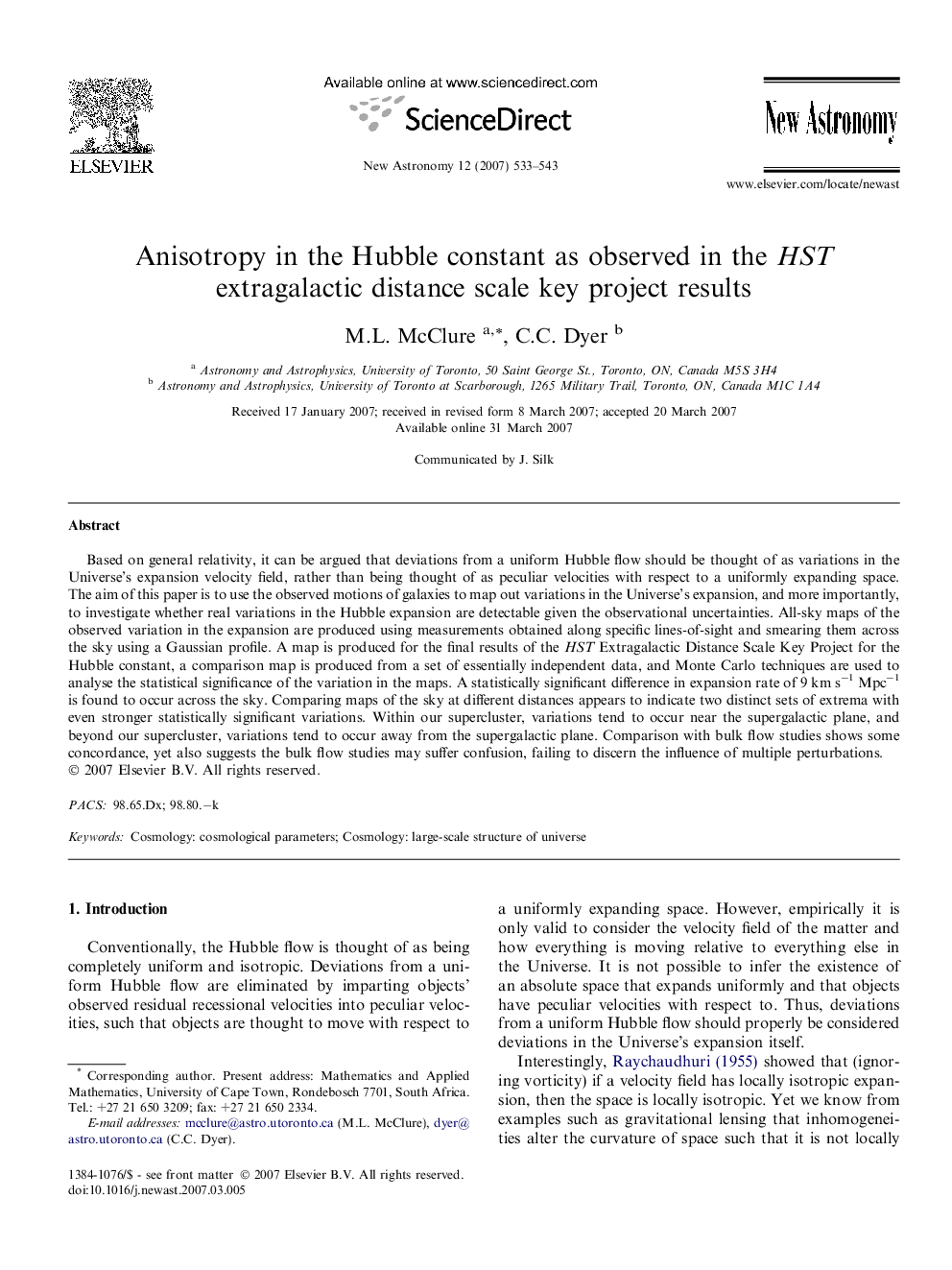| Article ID | Journal | Published Year | Pages | File Type |
|---|---|---|---|---|
| 1779411 | New Astronomy | 2007 | 11 Pages |
Based on general relativity, it can be argued that deviations from a uniform Hubble flow should be thought of as variations in the Universe’s expansion velocity field, rather than being thought of as peculiar velocities with respect to a uniformly expanding space. The aim of this paper is to use the observed motions of galaxies to map out variations in the Universe’s expansion, and more importantly, to investigate whether real variations in the Hubble expansion are detectable given the observational uncertainties. All-sky maps of the observed variation in the expansion are produced using measurements obtained along specific lines-of-sight and smearing them across the sky using a Gaussian profile. A map is produced for the final results of the HST Extragalactic Distance Scale Key Project for the Hubble constant, a comparison map is produced from a set of essentially independent data, and Monte Carlo techniques are used to analyse the statistical significance of the variation in the maps. A statistically significant difference in expansion rate of 9 km s−1 Mpc−1 is found to occur across the sky. Comparing maps of the sky at different distances appears to indicate two distinct sets of extrema with even stronger statistically significant variations. Within our supercluster, variations tend to occur near the supergalactic plane, and beyond our supercluster, variations tend to occur away from the supergalactic plane. Comparison with bulk flow studies shows some concordance, yet also suggests the bulk flow studies may suffer confusion, failing to discern the influence of multiple perturbations.
